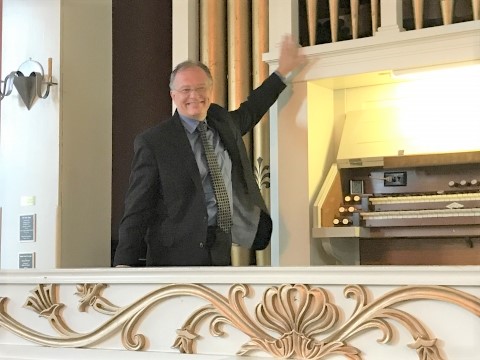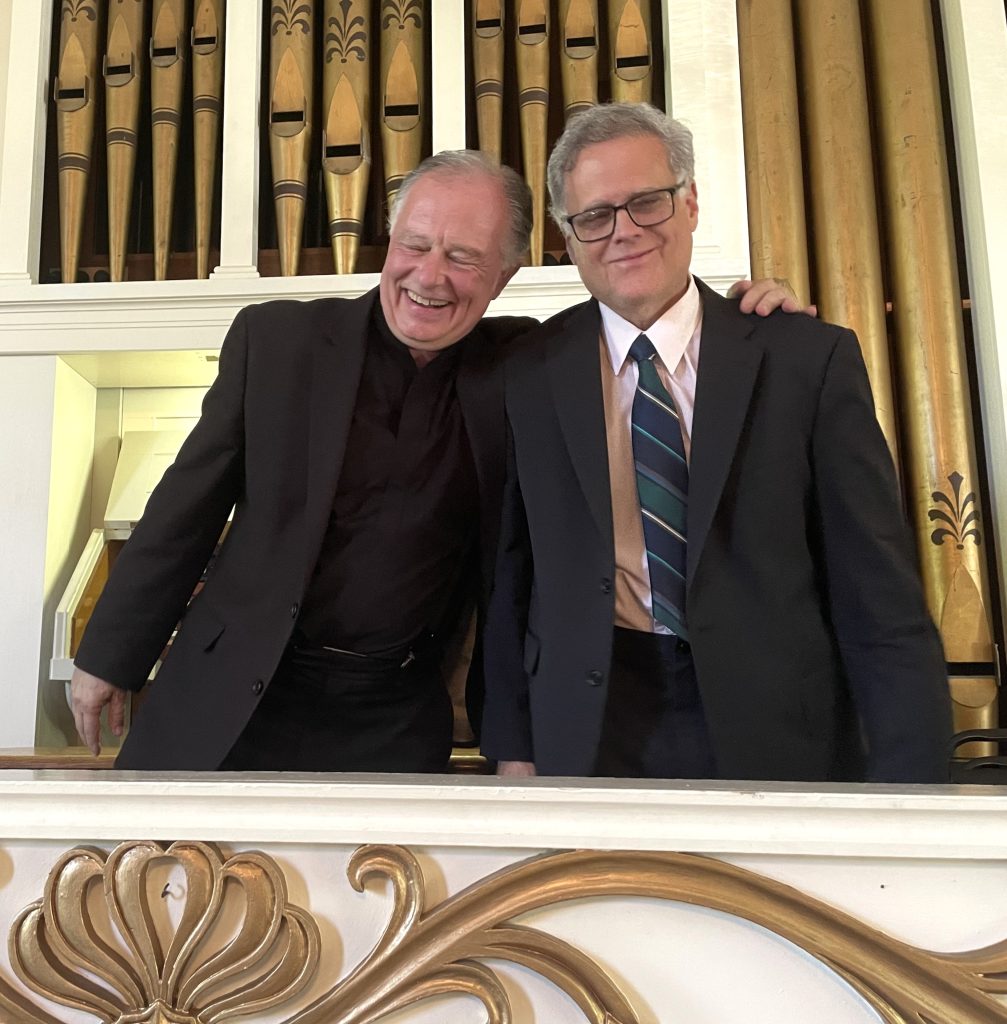
by Kevin T McEneaney
Last Saturday afternoon at Smithfield Church in Amenia, Kent Tritle, organist for the New York Philharmonic Orchestra and the Oratorio Society of New York, along with cellist Arthur Fiacco performed an annual benefit concert for the New York Oratorio Society on the Church Johnson tracker-organ.
Prelude, Fugue, and Chaconne in C major, Bux 137 by Dietrich Buxtehude (1637-1707) offered an example of the northern German organ tradition that featured patterned variations which became a decisive influence on the work of J.S. Bach who went to hear Buxtehude. The chaconne delivered short harmonic variations resembling a knitted sweater at the impressively dexterous fingers of Kent Tritle who made the organ sing with eloquent resonance.
Adagio in A minor, BWV 564 by J. S. Bach (1685-1750) followed the map of a concerto, the slow Adagio resembling an instrumental concerto with somber panache as if climbing a mountain. Prelude and Fugue in C major, BWV 547 (fugue means flight) flew with rushing runs of 1/16th notes in contrapuntal, polyphonic mode delineating a sense of unfolding wonder.
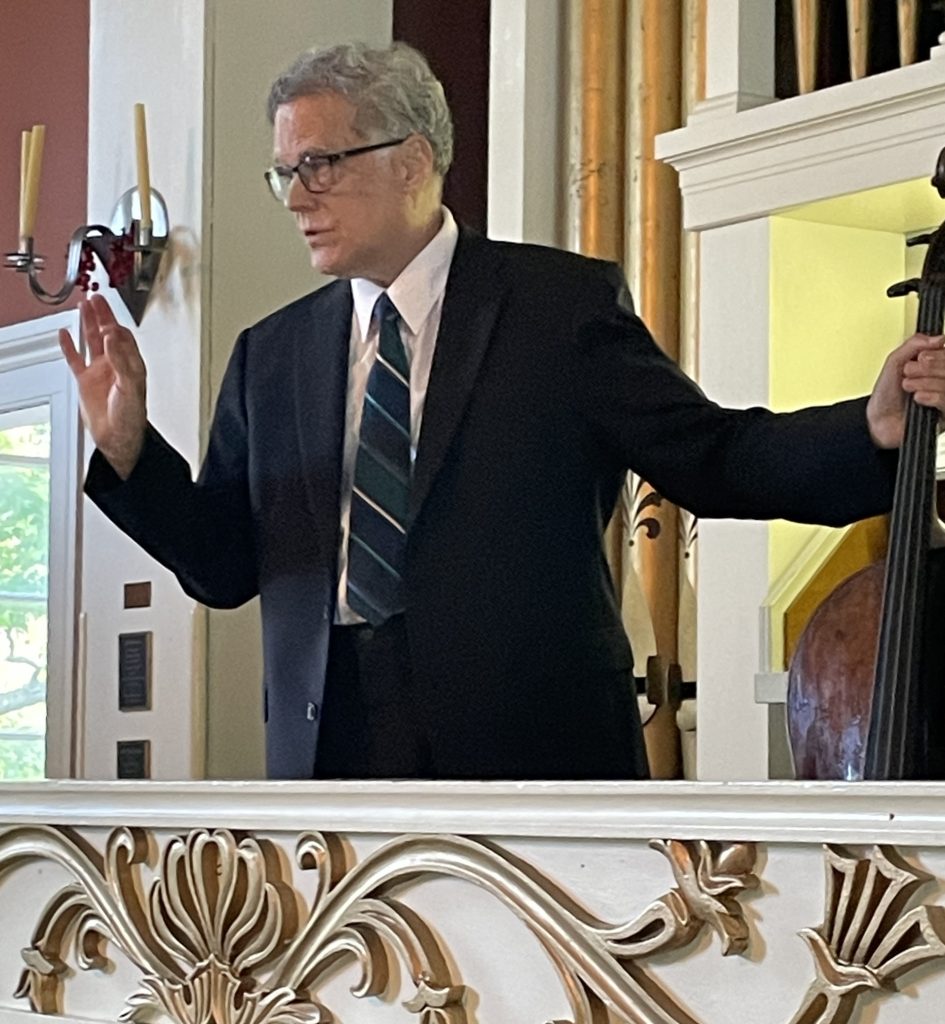
Sonata in B-flat major for Cello, RV 47 by Antonio Vivaldi (1678-1741) followed and flowed from the cello of Arthur Fiacco. Fiacco played a c. 1727 cello made by Carlo Tononi in Venice. (Pablo Casals played a Tononi cello.) While Vivaldi played the violin, his second favorite instrument was the cello, for which he wrote many compositions. This work commemorates his father, a noted violinist of his time. His father began teaching his son the violin at the age of five, and by eleven Antonio was playing with his father in small church orchestras.
The opening Largo invokes happy childhood memories; there is even a little comic repetition, which is cute. The Allegro describes the challenge of mastering the violin and it features some of the most difficult lines to play that Vivaldi ever wrote. The succeeding Largo was a deeply plangent lament, nearly a dirge, on the death of his father. The concluding Allegro opened with a note of resignation, then rapidly acclaimed the marvelous joy of music, the gift that blossomed under his father’s guidance. Arthur brought out that infectious joy magnificently! We tend to think of Vivaldi as a public performer, yet here we heard a strikingly personal, biographical confession in this little-performed masterpiece.
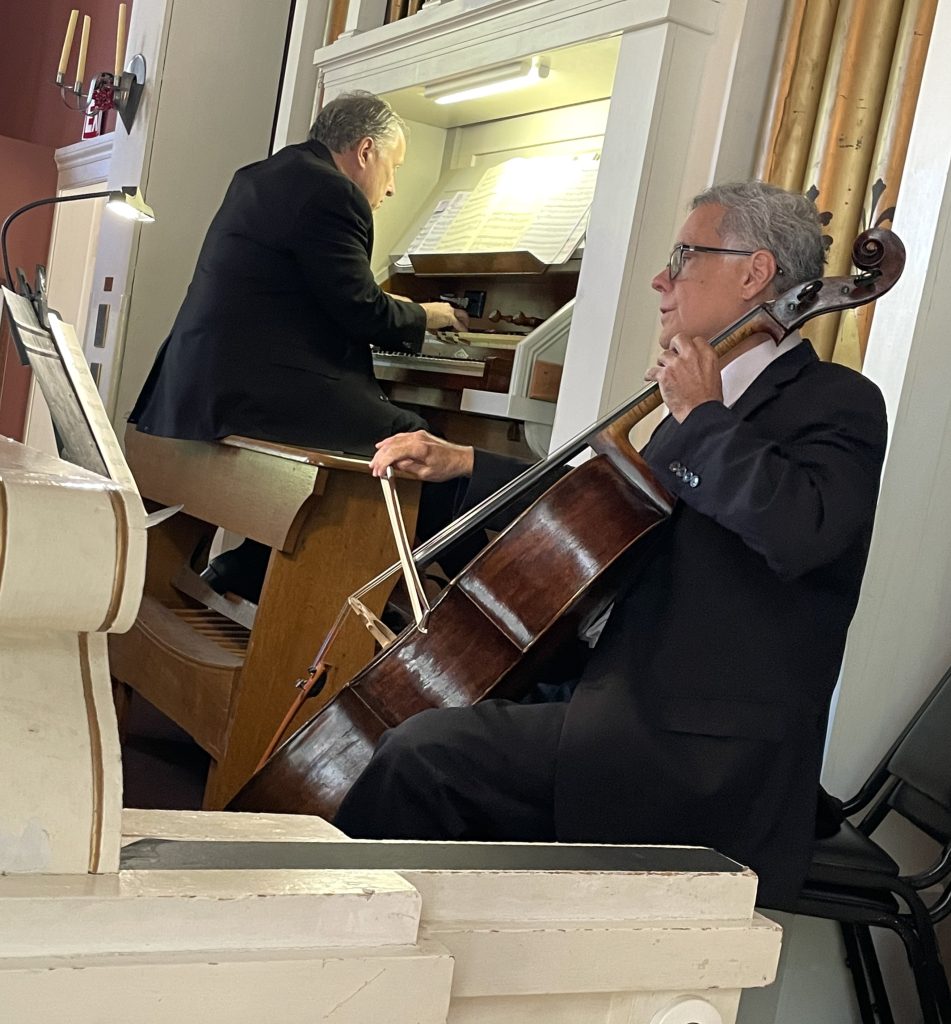
Prelude and Fugue in C minor, Op. 37, No. 1 by Felix Mendelssohn (1809-1847) followed. At eight years old, Mendelssohn studied under Johann Philip Kirnberger (a student of J.S. Bach) where Felix quickly learned the procedures of counterpoint. On his fifteenth birthday, his maternal grandmother gave him the score of Bach’s St. Mathew’s Passion; five years later Felix produced and conducted the work (with his sister Fanny in the chorus) to ignite a J.S. Bach revival. In this early composition exercise, the Prelude is twice as long as the concluding fugue. Tritle offered far more resonance in his performance than can be found on recordings of this work; hearing music live from a great performer is music at its best!
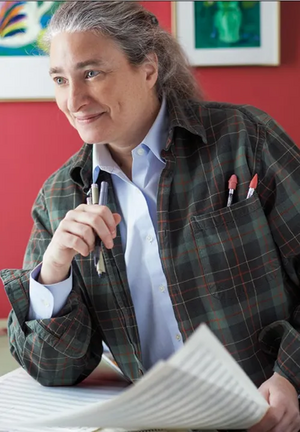
Berceuse à Pierre Op. 82 No. 3 by Canadian composer Rachel Laurin (1961-2023) was a delightful surprise in the program. I loved the melody and would have liked to have heard it as a child. The conclusion did indeed make me sleepy.
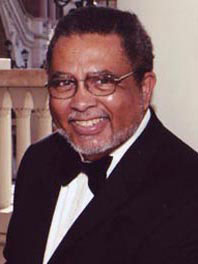
Fantasy on Brother James’ Air by Adolphus Hailstork (1941-), born in Rochester, New York, presented the charming legend of Brother James, a Scot mystic, healer, and poet. This short piece was elegant, dignified, and charming in a friendly way. I have heard some of Hailstork’s work on the radio; he is an important contemporary composer whose large body of work should be played more often at concerts.
Symphonie V, Op. 42, No. 1, an Adagio excerpt by the famous organist Charles-Marie Widor (18-44-1937) delivered a solemn religious theme with long-held, dramatic notes.
Sonata I in F minor, Op. 65, No. 1 by Felix Mendelssohn, the Allegro assai vivace was livelier than its title. Mendelssohn’s biographer Eric Werner wrote: “Next to Bach’s works, Mendelssohn’s Organ Sonatas belong to the required repertory of all organists.” In this series of six sonatas (in the sense that Bach used the term to signal variations), Felix played from memory in England, even though English organs were inferior to German or French organs. Kent noted that the English did not use organ pedals very much and the English were astounded by the way that Felix played; I was astonished by the extravagant pedal work employed by Tritle in this explosive finale that was a wow larger than you might imagine, unless you were there at Smithfield Church in Amenia!
